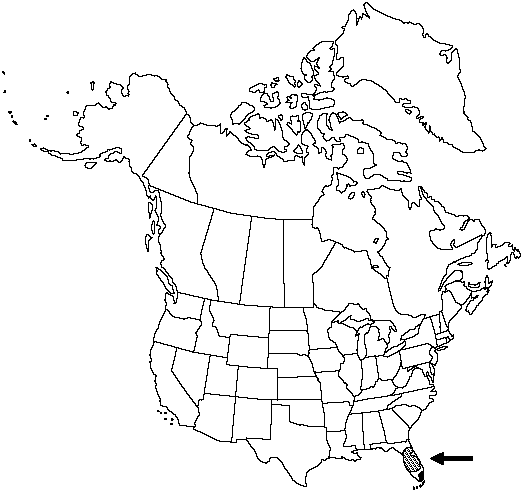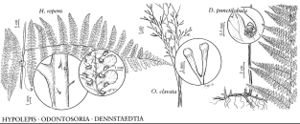Hypolepis repens
Tent. Pterid. 162. 1836.
Stems long-creeping, branching, 2.5–4 mm diam., pubescence brown. Leaves 9–60 dm. Petiole straw-colored to reddish brown, 2–4(–6) dm, glabrous or pubescent, bearing prickles; primary pinnae similarly pubescent. Blade deltate, 3–4-pinnate-pinnatifid, lateral divisions opposite or nearly so, (2.5–)4–15 × 1.2–6 dm. Rachis nearly glabrous or glandular-pubescent, with prickles. Ultimate segments spreading, elliptic to lanceolate or oblong-elliptic, pinnatifid, 4–9 × 7 mm, abaxially paler, somewhat papery, nearly glabrous to glandular-pubescent, lobes rounded. Veins simple to 1-forked, ending just short of margins. Sori in sinuses of ultimate segment divisions, reniform to semicircular or appearing circular at maturity. Indusia formed from thin, recurved flap of blade tissue, sometimes obscured by sporangia when mature. 2n = 208.
Phenology: Sporulates essentially all year.
Habitat: low hammocks and swamps, generally wet to moist wooded areas in circumneutral to subacid soils
Elevation: 0 m
Distribution

Fla., West Indies, Mexico, Central America, South America.
Discussion
Within the flora Hypolepis repens is found primarily in central peninsular Florida with disjunct populations in southernmost Florida and in northeastern Florida.
Selected References
None.
